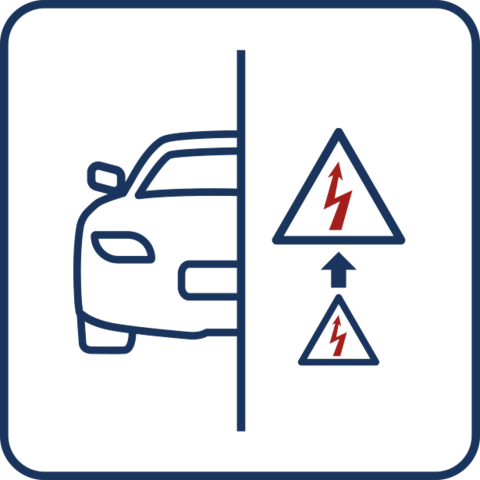
Three ways to improve range and efficiency in electric vehicles
contact us

Chris Klok, Director of Electric Vehicle Technology at MacDermid Alpha Electronics Solutions
Depending on where in the world you are based, the uptake of electric vehicles (EVs) is likely to differ quite considerably. Schmidt Automotive states that battery electric vehicles (BEV) will account for 60% of all vehicles sold in Western Europe by 2030. BEV sales more than doubled in 2020 alone, rising sharply again in 2021 to account for 10% of the market. However, in the US, it’s an entirely different story. Cleantechnica estimates that the EV market share in the US is small, somewhere between 2–3%, with between 70–80% of those sales being Tesla vehicles.
The reasons for these stark differences are numerous. Variations in how people use vehicles, attitudes towards EV range anxiety, charging locations, and differing legislation all explain the huge variance in EV market penetration between regions. Whatever the fragmented global market picture, the reality is that automakers need to inspire genuine mass-market demand for EVs based on price, performance, efficiency, and range.
Range is an area MacDermid Alpha Electronics Solutions has focused on for several years, working with carmakers to refine vehicle designs within the power electronics, rather than the battery itself, in order to improve range and efficiency. The recent acquisition of H.K. Wentworth Limited brought the Electrolube brand into MacDermid Alpha Electronics Solutions, enabling us to further expand our powertrain expertise to cover electrical energy storage within the battery in addition to the motor. This means we can propose changes throughout the electric powertrain which increase range and efficiency without added batteries or vehicle weight.

Using sintered silver in place of traditional solder, where power semiconductors are attached within the inverter, allows the possibility of improving the electrical passthrough. Therefore, the electrical conductivity of an EV increases by almost 40%. This is a particular area of expertise within MacDermid Alpha Electronics Solutions, who is still considered the pioneer of silver sintering in electric vehicles.
As an example, our ALPHA® Argomax® sintered silver technology has been proven to improve EV efficiency by 40%, achieve a potential 75% reduction in die count and a 34% reduction in inverter weight; enabling OEMs to design drivetrains with greater range and lighter weight, thus further improving vehicle efficiency.

EV range depends largely on the energy content and density of the batteries themselves. To achieve increased density, it is not uncommon for automakers to combine several battery modules into an individual battery pack. When you increase the number of modules, you also increase the thermal challenges in the battery pack itself during operation. When you increase the number of modules, you also increase the temperature of the battery itself during operation.
To ensure high performance and enable additional range and efficiency, it is important that this excess heat is dissipated away from the various areas of the battery pack. Thermal gap fillers support this dissipation and enable equal heat spreading by displacing the air and filling in the gaps between multiple substrates.
Generally speaking, the more efficient the thermal materials function, the more efficiently the battery can perform within its optimal thermal range and the lower the risk of failure. Electrolube is an established name in thermal gap filler technologies, which facilitate heat dissipation in EVs.

With the proliferation of vehicle electronics, particularly in EV designs, ‘under the hood’ applications require advanced protection for electrical components to manage temperature and environmental extremes. Electronics are increasingly subject to harsh conditions in the form of temperature extremes, high humidity and condensation, and corrosive gases. With the growth of electric vehicles, where much higher voltages are the norm, increased dielectric protection is required to ensure designs are sufficiently dense to meet size and weight constraints.
Providing the right protection is fraught with challenges. Protective coatings must be resilient to environmental extremes while also complying with environmental regulations. In light of solvent emissions targets, it is unsurprising that solvent-containing products are widely discouraged, as the list of prohibited substances for use in automotive applications continues to grow.
Through Electrolube, MacDermid Alpha Electronics Solutions is now able to offer conformal coatings; thin, protective polymeric coatings that can be applied to electronic circuit boards or assemblies to provide robust environmental protection without excessive cost or weight penalties. Our range of highly durable, solvent-free, modified polyurethane conformal coatings can be applied more thickly than regular conformal coatings and cured within 10 minutes at 80°C, re-using existing thermal curing ovens often used in solvent-based processes. This provides optimal protection for electrical components while minimizing environmental impact, therefore enabling greater efficiency of an EV powertrain.
As we consolidate the Electrolube brand into MacDermid Alpha Electronics Solutions, the benefits and experience we can pass onto major OEMs and Tier 1 partners are continually expanding. On the path toward widespread adoption of electric vehicles, carmakers must first overcome the major hurdle of range anxiety without adding additional battery weight cost, all while conforming to regulatory standards.
Through the breadth of our services and expertise, MacDermid Alpha Electronics Solutions is the only global supplier that can view the entire EV powertrain at a systems-level to understand where small engineering changes can amount to major leaps forward in range and reliability.